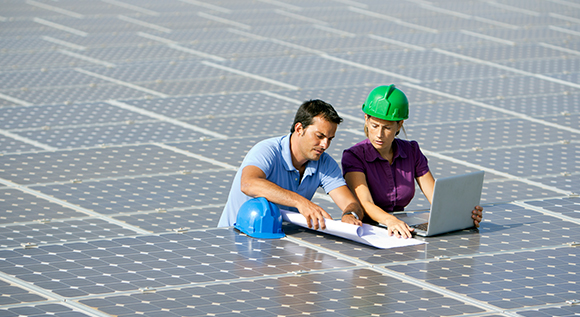Fitting in PV modules with millimetre precision to improve their efficiency
Changing the dimensions of a photovoltaics installation in a way that improves its efficiency sounds easy, however, up until now, nobody knew what the right dimensions actually were. Now, a team of researchers has come up with the answer.
 © iStock.com/LL28
© iStock.com/LL28
How to increase the efficiency of PV modules is one of the big questions in the solar industry, and both researchers and industry are looking to provide an answer. Among them is a team made up of researchers from the Fraunhofer Institute for Solar Energy Systems (ISE), the Fraunhofer Center for Silicon Photovoltaics (CSP) and twelve partners from German industry. The goal behind the CTM100 project is to improve the level of solar radiation that reaches the solar cells inside the PV module without changing the cells themselves, and therefore improve the module’s efficiency.
Heckert Solar GmbH, a leading PV module producer from Saxony, has changed the width and length of its modules by just a few millimetres, leading to a 0.5 percent increase in the modules’ efficiency. Modules that previously provided 300 megawatts per year now provide 301.5 megawatts per year. This means that an additional 400 households could be supplied with solar electricity.
The dimensions of the modules had been modified as part of a simulation calculation that the team of researchers developed over the course of the project. “The simulation allows us to conduct detailed analyses, whilst at the same time reducing the cost of prototype development”, Carl Otto, CTM100 project leader at Heckert Solar GmbH said.
The researchers have set themselves even more ambitious goals to be achieved by 2019. When it comes to improving the efficiency of PV modules, the structure of the modules also plays a key role. Because event the best cell is only as good as the the module it is installed in. In order to describe the relationship between the efficiency of the cells incorporated in the module and the efficiency of the module as a whole, the so-called cell-to-module ratio (CTM) is used. “The CTM100 project aims to develop high-quality modules that reach a CTM of more than 100 percent”, says Professor Jens Schneider of the Fraunhofer CSP, who also serves as the coordinator of the project. The efficiency of the cells incorporated in the module is to be higher than the efficiency of the individual cells on their own.
In order to put this into practice, the researchers are analysing not only the structure of the modules, but also the materials used. For example, they want to use reflections in the glass to make sure that the rays of the sun can reach the solar cells unhindered. Because this is where the electricity is being generated. No changes will be made to the photovoltaic cells as these have already been optimised to a large extent.
The Federal Ministry for Economic Affairs and Energy is providing around €2.5 million in funding for the CTM100 project.

